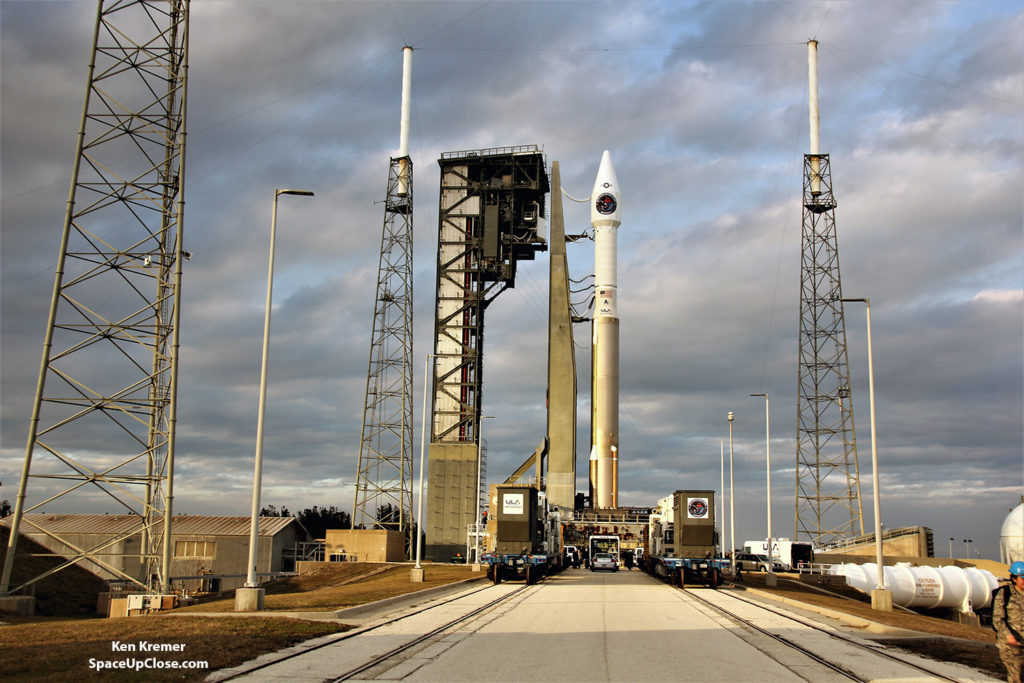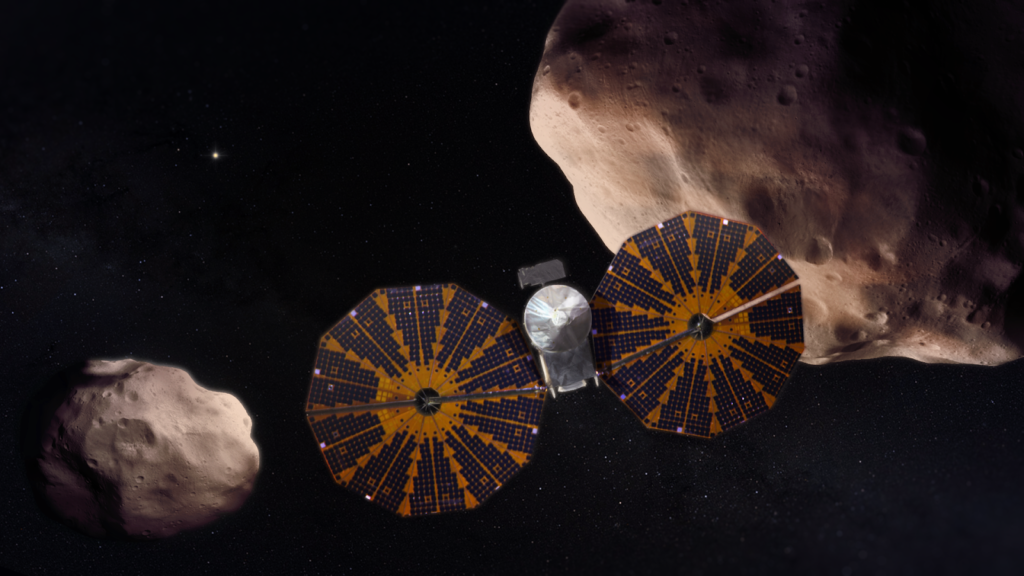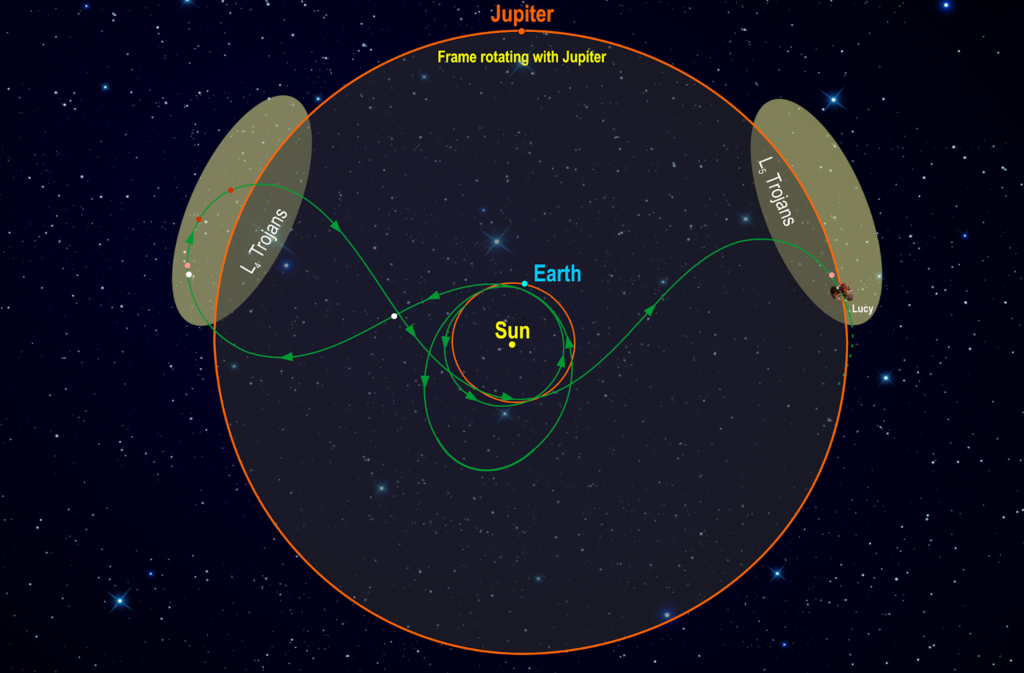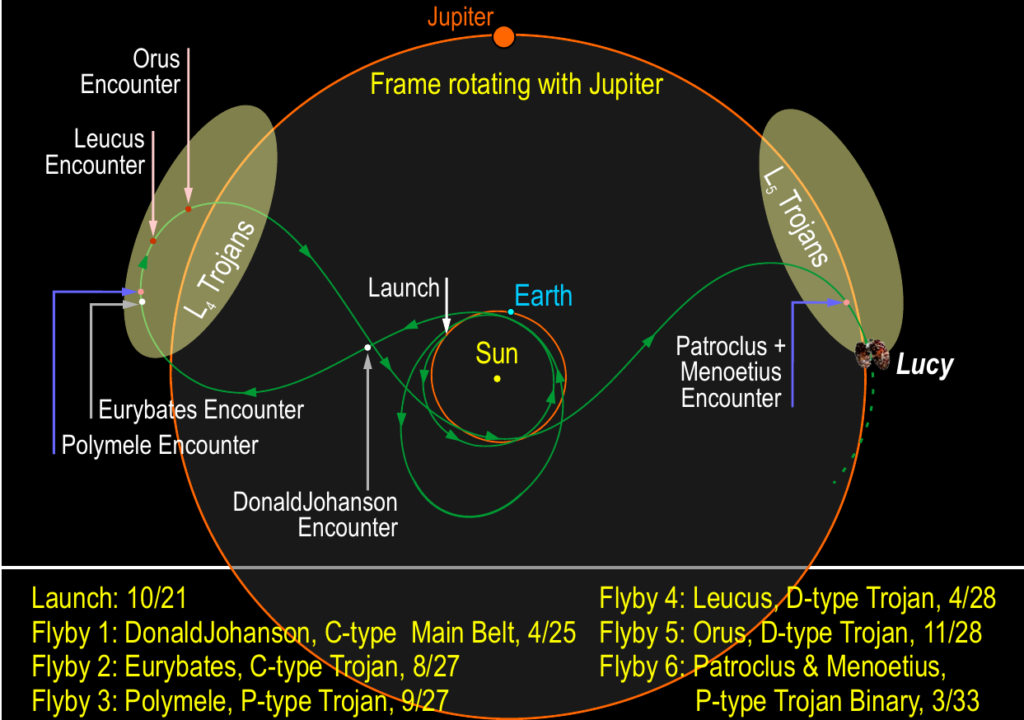2019
CAPE CANAVERAL, FL – SpaceX has filed a formal
protest against NASA’s selection late last month of the United Launch Alliance(ULA) workhorse Atlas V rocket to launch the Lucy planetary science spacecraft on
the agency’s first ever mission to Jupiter’s swarm of unexplored Trojan
asteroids.
The SpaceX protest was filed with the US Government
Accountability Office (GAO on Feb. 11. The GAO has until May 22 to announce a
verdict on the protest.
SpaceX filed its first ever protest with NASA
because they claim they can carry out the launch at a significantly cheaper
cost compared to the $148 million award to launch competitor ULA, SpaceX told
Space UpClose.
“Since SpaceX has
started launching missions for NASA, this is the first time the company has
challenged one of the Agency’s award decisions,” a SpaceX spokesperson told
Space UpClose.
As currently planned the Lucy mission is targeted to launch in October
2021 on a ULA Atlas V rocket from Space Launch Complex-41 (SLC-41) at Cape
Canaveral Air Force Station in Florida, NASA announced in the contract award on
Jan. 31.
But ULA and SpaceX are in fierce competition for
launch contracts of all types and SpaceX clearly felt a prompt protest was in
order.
“SpaceX offered a
solution with extraordinarily high confidence of mission success at a price
dramatically lower than the award amount, so we believe the decision to pay
vastly more to Boeing and Lockheed for the same mission was therefore not in
the best interest of the Agency or the American taxpayers,” a SpaceX spokesperson
elaborated to Space UpClose.
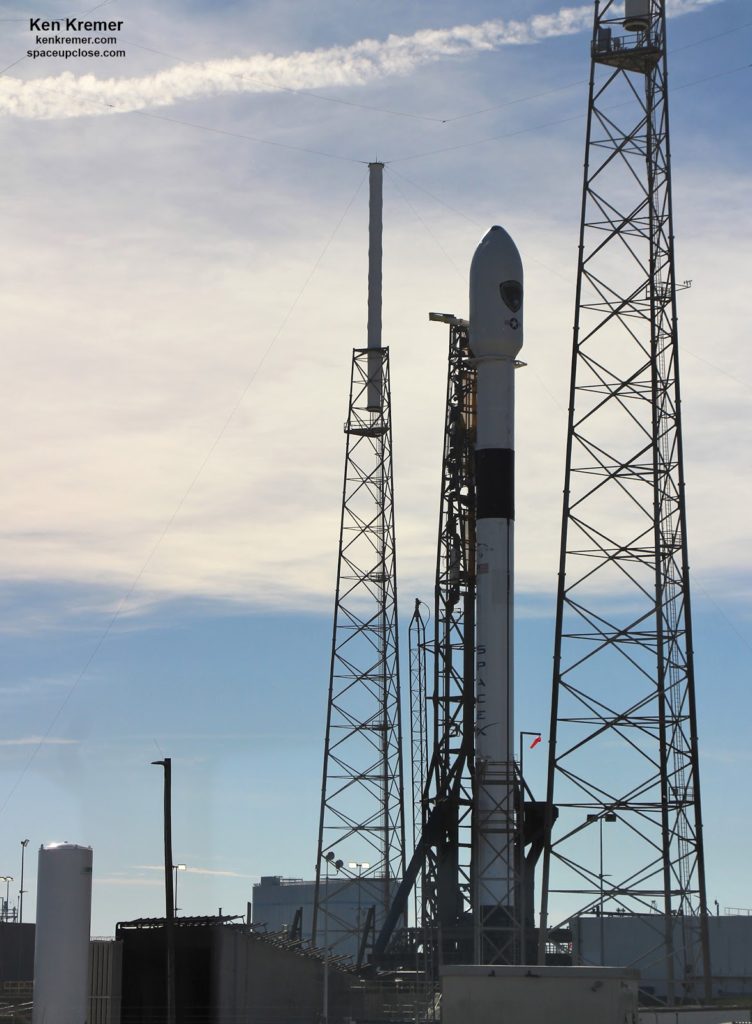 |
| File photo of SpaceX Falcon 9 launch vehicle. Credit: Ken Kremer |
The NASA Launch Services Contract award to ULA had specified a total
cost of approximately $148.3 million for the Lucy mission launch on Atlas V,
which includes the launch service and other mission related costs.
SpaceX proposed to launch Lucy on their Falcon 9 rocket which NASA
certified last year as a Category 3 launch vehicle. Category 3 is reserved for
NASA’s highest cost and most complex scientific missions. The process of
designating launch vehicles as Category 3 is designed by NASA to assure the
highest practicable probability of success while providing cost-effective and
reliable launch services.
As a result of the protest NASA issued a stop work order on the
launch services contract.
It
must be noted that the Lucy mission is on a very tight timeline and must launch
in 2021 during a window of opportunity that opens
Oct. 16, 2021. Otherwise the science will be degraded.
“With boosts from Earth’s gravity, the spacecraft will embark on a
12-year journey to study primitive asteroids orbiting the Sun in tandem with
Jupiter,” said NASA.
During the 4156 day mission Lucy will
investigate six Trojan asteroids, which lead and follow Jupiter in its orbit by
roughly 60 degrees and one main belt asteroid that “hold vital clues to the
history of the Solar System.”
“No other space mission is history has been launched to as many
different destinations in independent orbits around the Sun!”
And there is no margin for delay with either the rocket or the
spacecraft because the mission must blastoff on a once-in-a-lifetime
opportunity opening Oct. 16, 2021.
To date the ULA rockets have been 100% reliable and will soon
launch NASA astronauts aboard the Boeing Starliner crew capsule later this year
to the International Space Station (ISS).
“We could not be more
pleased that NASA has selected ULA to launch this amazing planetary science
mission,” said Tory Bruno, ULA’s president and chief executive officer, in a
statement.
“This mission has a
once-in-a-lifetime planetary launch window, and Atlas V’s world-leading
schedule certainty, coupled with our reliability and performance provided the
optimal vehicle for this mission. Our Atlas V rocket has launched 79 times
achieving 100 percent mission success, and we look forward to working again
with our mission partners to explore our universe.”
The mission will launch aboard an Atlas V 401
configuration rocket with a 4 meter (13-foot) diameter payload fairing and a
single engine Centaur upper stage with no thrust augmentation from first stage
solid rocket boosters.
SpaceX counters that noting Falcon 9 has completed 66 missions to date, including the NASA LSP
missions Jason-3 and TESS as well as 16 Cargo Dragon missions
to and from the International Space Station (ISS).
In 2019 both SpaceX and Boeing/ULA are planning unmanned and
manned test flights of crew capsules – Crew Dragon and Starliner- that help
return human spaceflight capabilities to the United States for the first time
since the Space Shuttle program ended in 2011.
Lucy is a Discovery class mission led
by principal investigator Harold “Hal” Levison from the Southwest
Research Institute in Boulder, Colorado.
“Lucy provides us with a unique opportunity,” said Levison, in a
Jan. 20 blog post.
“Because the Trojans are remnants of the stuff that formed the
outer planets, they are literally the fossils of planet formation. Lucy, like
the human fossil for which it is named, will revolutionize the understanding of
our origins.”
Lockheed Martin is building the spacecraft as prime contractor.
“Jupiter’s swarms of Trojan
asteroids may be remnants of the primordial material that formed the outer
planets, and serve as time capsules from the birth of our solar system more
than 4 billion years ago. Lucy will be the first space mission to study the
Trojans.
The mission takes its name
from the fossilized human ancestor (named “Lucy” by her discoverers) whose
skeleton provided unique insight into humanity’s evolution. Lucy will complete
a 12-year journey to seven different asteroids.”
After launching on the Atlas
V in Oct 2021, Lucy will carry out two Earth flyby maneuvers in Oct 2022 and Dec 2024 to set up the
asteroid flyby tour.
Here is a detailed outline
of the Lucy asteroid flyby tour:
Institute (SwRI) in Boulder, Colorado is the principal investigator institution
for the Lucy Mission and will lead the science investigation. NASA’s Goddard
Space Flight Center, Greenbelt, Maryland will provide overall mission
management, systems engineering, and safety and mission assurance. Lockheed
Martin Space Systems in Denver, Colorado will build the spacecraft.
Watch for Ken’s
continuing onsite coverage of NASA, SpaceX, ULA, Boeing, Lockheed Martin,
Northrop Grumman and more space and mission reports direct from the Kennedy
Space Center, Cape Canaveral Air Force Station, Florida and Wallops Flight
Facility, Virginia.
and human spaceflight news: www.kenkremer.com –www.spaceupclose.com –
twitter @ken_kremer – email: ken at kenkremer.com
Dr. Kremer is a research scientist and journalist based in the
KSC area, active in outreach and interviewed regularly on TV and radio about space topics.
………….
Ken’s photos are for sale and he is available for lectures and outreach events
Learn more about the upcoming/recent SpaceX Falcon 9 Nusantara Satu launch, USAF GPS 3-01, SpaceX Falcon 9/CRS-16 launch
to ISS, NASA missions, ULA Atlas & Delta
launches, SpySats and more at Ken’s upcoming outreach events at Quality Inn Kennedy Space Center, Titusville,
FL, evenings:
Feb
20/22: “SpaceX Falcon 9 Nusantara Satu launch, Dragon CRS-16 resupply launch to ISS, SpaceX
Falcon GPS 3-01, SpaceX Falcon Heavy & Falcon 9 launches, upcoming SpaceX Falcon
9 USAF GP3 3-01, NRO & USAF Spysats, SLS, Orion, Boeing and SpaceX Commercial
crew capsules, OSIRIS-Rex, Juno at Jupiter, InSight Mars lander, Curiosity and
Opportunity explore Mars, NH at Pluto, Kuiper Belt and more,” Kennedy Space
Center Quality Inn, Titusville, FL, evenings.
Photos for sale


